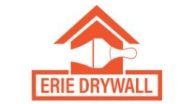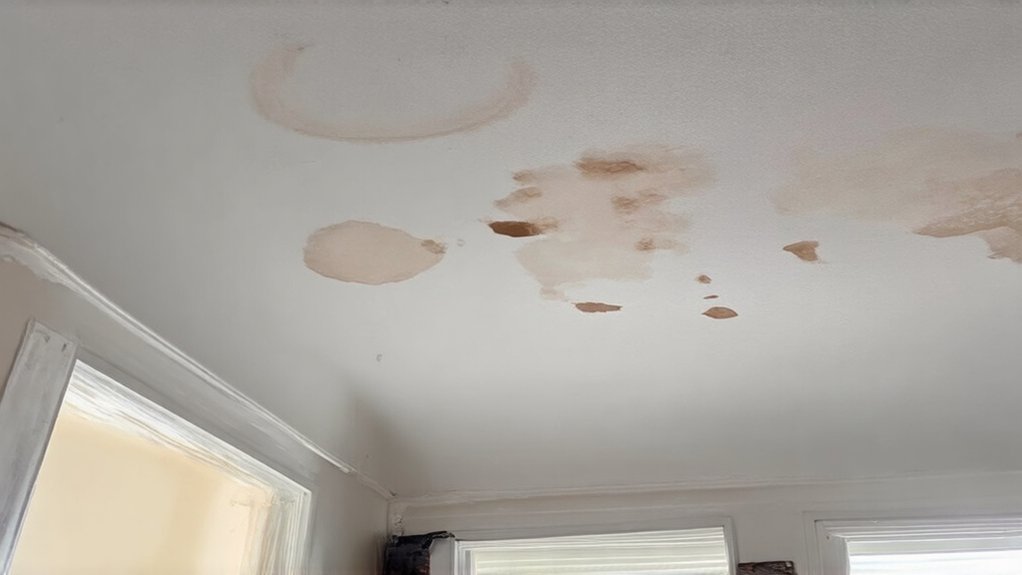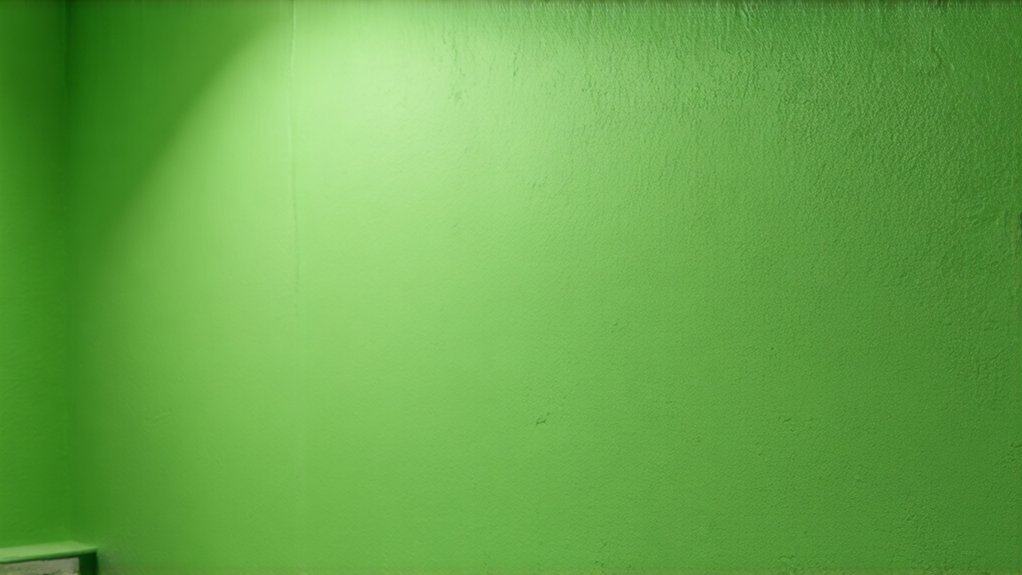In Erie’s snowy winters, your ceiling can suffer water damage from several culprits. Ice dams trap melting snow, forcing water under your shingles and into your home’s interior. Heavy snowpack creates structural pressure that can cause roof sagging and potential leaks. Poor attic insulation and ventilation worsen these risks, allowing moisture to seep through. Clogged gutters and compromised foundation walls further increase your home’s vulnerability to water intrusion. Stick around to discover more protective revelations.
Ice Dams and Roof Drainage Problems
If you’ve noticed water stains or dampness on your ceiling during winter, you might be dealing with ice dams. These troublesome formations occur when snow on your roof melts unevenly, creating blockages that prevent proper drainage.
When warm attic temperatures cause melting snow to flow, ice dams trap water, forcing it underneath shingles and into your home’s interior. The result? Potential roof leaks and ceiling damage that can quickly become costly.
Your home’s insulation and ventilation play imperative roles in preventing these winter water intrusions. By addressing these underlying issues, you’ll protect your home from potential structural damage and expensive repairs. Drywall repair experts in Erie can help assess and restore any water-related ceiling damage caused by these winter challenges.
Snowpack Weight and Structural Pressure
Beyond ice dams, winter’s snowpack presents another hidden threat to your home’s structural integrity. When heavy snow accumulates on your roof, the roof snow load can become dangerously significant, potentially causing serious damage to your home’s skeleton.
You’ll want to monitor snow depth and weight carefully. Dense, wet snow weighs substantially more than light, powdery snow. If you’re seeing sagging ceiling areas or hearing strange creaking sounds, these could signal excessive structural pressure. Drywall installation experts in Erie recommend professional snow removal to prevent potential roof collapse and water damage, protecting your home’s critical structural components.
Attic Insulation and Ventilation Challenges
While many homeowners overlook their attic’s pivotal role, proper insulation and ventilation are essential defense mechanisms against water damage. You’ll want to address air sealing considerations to prevent moisture infiltration and minimize thermal bridging issues that compromise your home’s protective envelope.
Poor insulation can create temperature variations that lead to condensation and potential ceiling damage. By ensuring adequate ventilation and strategic insulation placement, you’ll protect your home from costly water-related repairs. Your attic isn’t just empty space—it’s a vital barrier between external elements and your living environment, making smart insulation choices imperative for long-term structural integrity.
Gutter and Downspout Blockage Risks
Just as your attic’s insulation plays a protective role, your home’s gutters and downspouts form another critical defense line against water damage. When roof debris accumulation clogs these crucial channels, water can’t properly drain, leading to potential ceiling leaks and structural issues.
You’ll want to stick to seasonal maintenance schedules, clearing leaves, twigs, and sediment that can block water flow. In Erie’s snowy climate, these blockages become even more critical, as melting snow and ice need clear pathways to prevent backing up under your roof’s edges. Regular gutter maintenance isn’t just recommended—it’s indispensable.
Foundation and Wall Moisture Intrusion
The foundation and exterior walls of your home represent critical barriers against moisture infiltration, yet they’re often overlooked until significant damage occurs. Water can seep through tiny cracks, compromising your home’s structural integrity and potentially leading to costly repairs.
Basement waterproofing isn’t just a luxury—it’s a necessity in Erie’s challenging climate. By improving soil grading around your home’s perimeter, you’ll direct water away from your foundation, reducing moisture intrusion risks.
Professional assessments can help identify vulnerable areas, allowing you to take proactive steps before minor issues escalate into major structural problems.
Pipe Freezing and Interior Water Damage
When winter’s chill descends on Erie, your home’s plumbing system becomes vulnerable to one of the most destructive maintenance nightmares: pipe freezing. Sudden temperature shifts can quickly alter your peaceful home into a water damage zone. Exposed pipes in unheated areas like attics, crawl spaces, and basements are especially at risk.
Don’t overlook appliance condensation issues that can also contribute to interior water damage. Insulating pipes, maintaining consistent indoor temperatures, and sealing potential drafts are your best defense against potential ceiling and wall water intrusion. Proactive homeowners can prevent costly repairs by understanding these winter risks.
Frequently Asked Questions
How Quickly Can Water Damage Lead to Mold Growth?
You’ll face rapid mold growth within 24-48 hours of moisture buildup. Don’t panic—act quickly to dry affected areas and prevent spreading. Your proactive response can protect your home and family’s health from potential mold risks.
Are Insurance Claims Typically Covered for Ceiling Water Damage?
You’ll likely be covered, but check your policy limits and property deductibles carefully. Most homeowners insurance handles sudden water damage, so don’t panic. We’re here to assist you with the claims process and restore your peace of mind.
What Are the Average Repair Costs for Ceiling Water Damage?
You’ll likely spend $500-$2,500 on ceiling water damage repairs, depending on leak detection costs and water mitigation expenses. Don’t worry—most homeowners face this challenge, and professional help can restore your space quickly and effectively.
Can I Repair Water Damage Myself or Need Professional Help?
You’ll want professional assessment for extensive damage, but minor water stains and small areas can be DIY-friendly. If you’re unsure about the damage’s severity, it’s best to consult an expert who can guide you through safe repair options.
How Do I Prevent Future Ceiling Water Damage in My Home?
You’ll prevent future ceiling water damage by investing in ventilation upgrades and insulation improvements. These smart home updates protect your living space, reduce moisture risks, and give you peace of mind during Erie’s challenging winter months.
Conclusion
If you’re dealing with water damage in Erie, don’t panic. Winter’s harsh conditions can wreak havoc on your home, but understanding the risks helps you stay proactive. You’ll want to inspect your roof, check insulation, and maintain your gutters regularly. When in doubt, call a professional who knows Erie’s unique climate challenges. With the right approach, you’ll protect your home and prevent costly repairs down the line.



